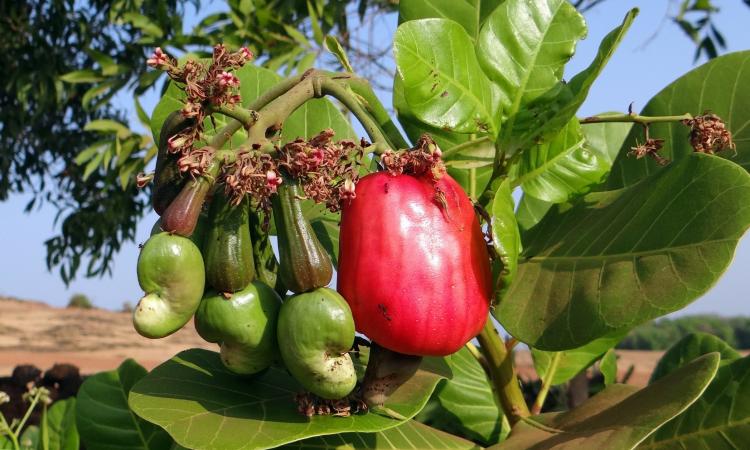
Biomass is a vital resource for the biofuel industry, and even the valuable cashew, known as the ‘golden jewel’ of Indian agriculture, can be converted into energy fuel. The cashew nut tree, scientifically known as Anacardium Occidentale, flourishes in subtropical regions such as Brazil, Nigeria, and Ghana, both through natural growth and planned agricultural practices, such as in coastal parts of India.
The cashew nut is made up of roughly 30% nut and 70% shell. Although the nut is consumed globally, the tough cashew nut shell, measuring 1 to 2 mm thick, is often discarded. Here, we'll explore how these cashew nut shells can be effectively repurposed instead of being wasted.
Unveiling the potential
Cashew nut shells are a by-product of cashew nut processing. They are separated from the kernels during the shelling process and have a high energy density. This makes them an excellent source of carbon-neutral fuel, as they do not emit harmful emissions when burned. Moreover, cashew nut shells are easy to store and transport, making them ideal for use in power plants, industrial boilers, and biofuel production.
Additionally, the cashew nut shell is rich in carbon and has a low moisture content, making it a highly efficient source of fuel. Its calorific value rivals that of traditional biomass fuels, such as wood chips and rice husks. Moreover, cashew nut shells are abundant, especially in countries like India, which is a significant producer of cashew nuts.
The shelling process involves removing the outer layer of the cashew nut to expose the shell. These shells are 100% biodegradable and serve as an excellent substitute for fossil fuels. They are used as loose biomass in industrial boilers and are also converted into biofuels like briquettes or pellets, which can directly replace coal in industrial heating systems.
Cashew nut shells typically contain 10.8% water and 2.6% ash, with a net calorific value of 18.9 MJ/kg, placing them within the biomass fuel mean range of 14–21 MJ/kg. As a fuel, cashew nut shells have a gross calorific value (GCV) of 3000 to 3500 Kcal/kg, with a moisture content of 15–20% and an ash content of 15–20%, according to Buyofuel.

Advantages and applications
The advantages of utilising cashew nut shells as an alternative fuel are multifaceted. Firstly, their availability as a by-product reduces waste and promotes sustainability in the cashew nut industry. Secondly, their combustion produces minimal emissions, contributing to cleaner air and a healthier environment.
The applications of cashew nut shells extend beyond fuel. They can be processed into biofuels for engines and generators, used in industrial processes for producing lubricants and paints, and even incorporated into animal feed. This versatility makes cashew nut shells a valuable resource with diverse potential uses.
Overcoming challenges
While the benefits are evident, challenges exist in harnessing cashew nut shells as a mainstream fuel source. Efficient extraction methods and proper combustion techniques are essential to maximise energy output and minimise environmental impact. Additionally, ensuring a sustainable supply chain and addressing logistical concerns are key areas of focus for widespread adoption.
India's role and global impact
In India, cashew cultivation spans across 0.7 million hectares of land, resulting in an annual production exceeding 0.8 million tonnes. Over the period from 2019–20 to 2021–22, India witnessed a growth in cashew nut production from 0.70 million tonnes to 0.77 million tonnes.
The above data proves that India, as a major producer of cashew nuts, holds a significant stake in the utilisation of cashew nut shells as an alternative fuel. States like Maharashtra, Orissa, and Andhra Pradesh play pivotal roles in cashew nut production, highlighting the country's potential to lead in sustainable energy practices.
On a global scale, the adoption of cashew nut shells as a renewable fuel can contribute to reducing reliance on fossil fuels and mitigating climate change. The shift towards eco-friendly energy sources aligns with global initiatives for a greener, more sustainable future.
Conclusion: Paving the way forward
Cashew nut shells offer a compelling solution to the energy and environmental challenges we face today. Their abundance, high calorific value, and diverse applications make them a valuable asset in the transition towards biofuels and renewable energy.
As research and innovation continue to drive advancements in biofuel technologies, cashew nut shells stand out as having excellent potential waiting to be tapped. By harnessing the power of cashew nut shells to generate energy, surely it can pave the way towards a cleaner, more sustainable energy landscape for generations to come.
About the author: A visionary entrepreneur, Kishan Karunakaran founded Buyofuel and transformed it into India's leading biofuel supply chain platform, driven by his expertise and mission to revolutionise the industry.
/articles/how-cashew-nut-shells-power-sustainable-future